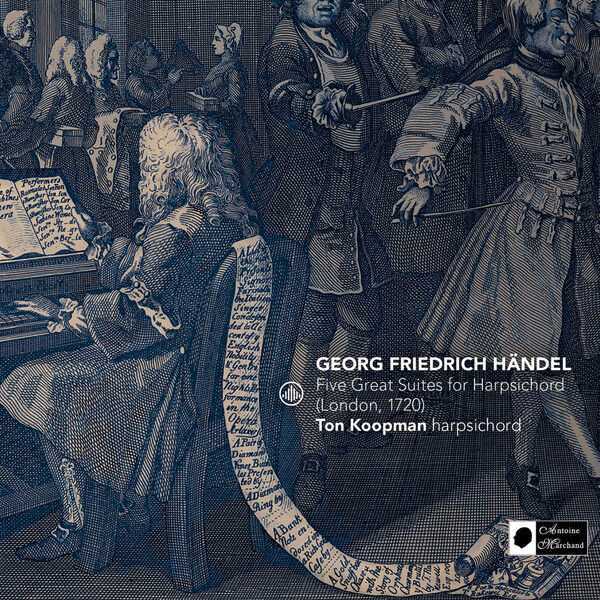
Composer: Georg Friedrich Handel
Performer: Ton Koopman
Format: FLAC (tracks)
Label: Challenge Classics
Catalogue: CC72923
Release: 2022
Size: 423 MB
Recovery: +3%
Scan: yes
Suite No. 3 in D Minor – HWV 428
01. Prelude (Presto)
02. Allegro
03. Allemande
04. Courante
05. Air – Double 1 – Double 2 – Double 3 – Double 4 – Double 5
06. Presto
Suite No. 2 in F Major – HWV 427
07. Adagio I
08. Allegro I
09. Adagio II
10. Allegro II
Suite No. 8 in F Minor – HWV 433
11. Prelude (Adagio)
12. Allegro
13. Allemande
14. Courante
15. Gigue
Suite No. 5 in E Major – HWV 430
16. Prelude
17. Allemande
18. Courante
19. Air – Double 1 – Double 2 – Double 3 – Double 4 – Double 5
Suite No. 7 in G Minor – HWV 432
20. Ouverture (Largo – Presto – Lentement)
21. Andante
22. Allegro
23. Sarabande
24. Gigue
25. Passacaille
George Frideric Handel made a name for himself as a brilliant organist and harpsichordist early on in his career. As a young man, he travelled from Germany to Italy in 1707. We do not know exactly how much or what Handel composed for harpsichord while in Italy, but we know more starting from the time he settled in England. Handel composed all sorts of works for harpsichord in England. In November 1720, he published the Suites de Pièces pour le Clavecin, now known as the “Eight Great Suites”, his most important work for harpsichord.
The spectacular Eight Great Suites show Handel the harpsichordist at his best. The suites are made up not only of newly composed movements, but also of improved versions of pieces he had written before and of harpsichord arrangements of his own compositions for other instruments. One theme central to interpreting Handel’s works for harpsichord (and the rest of his œuvre, for that matter) is what to do with the dotted rhythms. In Handel’s music, we regularly see a theme appearing in different rhythmic variants – sometimes dotted, sometimes not, or only partially, dotted. The question, therefore, is whether to perform these rhythms uniformly throughout the piece or to play them as they were written out in each instance by the composer. Koopmans has in large part chosen the latter.